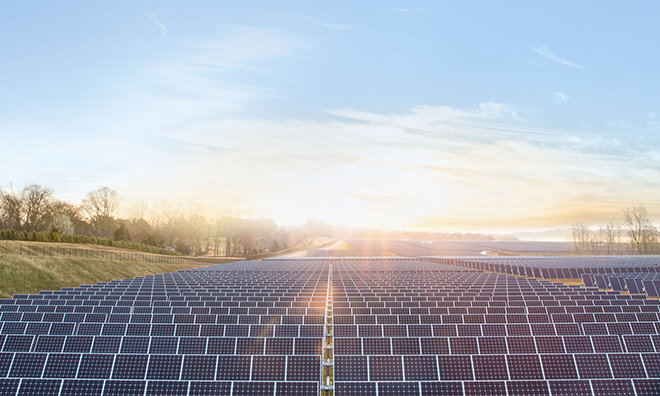The $848 million solar power deal Apple signed with First Solar last month is a better value than some have suggested, according to vice president of Environmental Initiatives Lisa Jackson, who on Thursday pointed to a surge in the amount of power Apple will receive towards the end of the contract.
First Solar is constructing a 280-megawatt solar farm, from which Apple is officially slated to have 130 megawatts for 25 years. PG&E will get the other 150 megawatts.
On paper this appears to be a so-so deal for Apple, costing the company between 8 and 14 cents per kilowatt hour. According to Fortune, however, Jackson revealed at Thursday's Wall Street Journal Eco:nomics conference that Apple will eventually acquire the entire 280 megawatts.
"Something that most people don't understand is that on the back end of the deal, it goes from a 130-megawatt deal to 280 megawatts," she said in an interview. "Toward the end of the 25-year period — I'm not going to say when — we get the rest of that."
PG&E's deal is in fact just for 15 years, meaning that at some point thereafter Apple will be able to scoop up that remaining share. This would double the amount of electricity Apple is acquiring, while the price remains the same.
The solar farm will occupy some 2,900 acres in California's Monterey County. Should it receive all needed approvals construction is scheduled to start in mid-2015, and finish by the end of next year. 130 megawatts should be enough to power virtually all of Apple's California operations, including the Campus 2 facility, which will have its own roof-mounted solar array.
 Roger Fingas
Roger Fingas




-xl-m.jpg)



 Thomas Sibilly
Thomas Sibilly
 Wesley Hilliard
Wesley Hilliard
 Christine McKee
Christine McKee
 Amber Neely
Amber Neely
 William Gallagher
William Gallagher
 Malcolm Owen
Malcolm Owen

 Mike Wuerthele
Mike Wuerthele








48 Comments
Even though there will be degradation of panel quality at the end of 15 years, this is still a good deal for Apple. If it is indeed true that the cost to Apple is ¢8 to ¢14/kWh, that is not at all unreasonable, especially for California.
(In December 2014, the average cost/kWh for commercial eletricity in CA was ¢14.09. http://www.eia.gov/electricity/monthly/epm_table_grapher.cfm?t=epmt_5_6_a)
Even though there will be degradation of panel quality at the end of 15 years, this is still a good deal for Apple. If it is indeed true that the cost to Apple is ¢8 to ¢14/kWh, that is not at all unreasonable, especially for California.
(In December 2014, the average cost/kWh for commercial eletricity in CA was ¢14.09. http://www.eia.gov/electricity/monthly/epm_table_grapher.cfm?t=epmt_5_6_a)
Especially if that is a fixed rate and we all know tomorrows dollars won't buy as much as todays.
Irrespective of the finances of this, I strongly support this project for two reason- first, it displaces carbon emissions. Second, it lets environmentalists see solar power for what it will need to become if it is to power our future- multinational companies paving over thousands of acres at a time because unfortunately, putting up a 10 square foot panel on the roof just doesn't cut it. Perhaps over time projects like this will help environmentalists reconsider their stance on nuclear, the only carbon free energy source with little to no environmental impact.
Perhaps over time projects like this will help environmentalists reconsider their stance on nuclear, the only carbon free energy source with little to no environmental impact.
Until something goes wrong. Then the worst possible environmental impact imaginable. Did you already forget about the Fukushima disaster?
Hmmmmm....what do they do with all that nuclear waste.